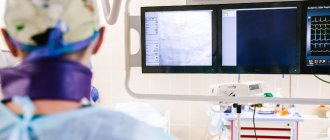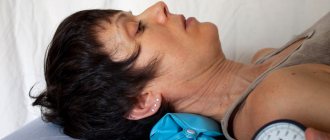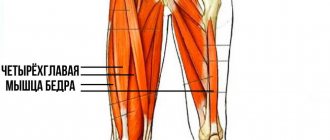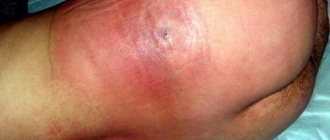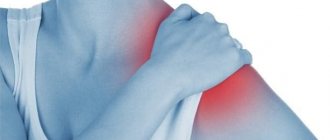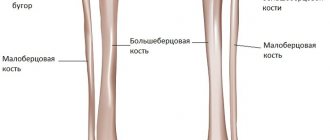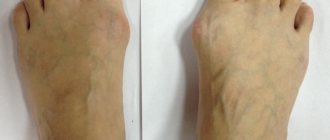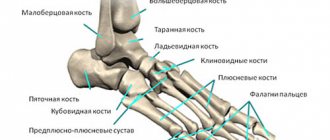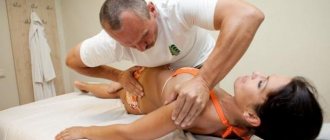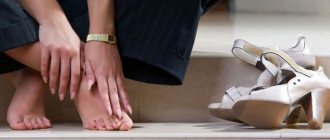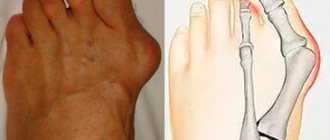The foot is a section of the lower limb that consists of several bones, ligaments and muscles. The main sections are the metatarsus, the fingers themselves, and the tarsus. The ligamentous apparatus is represented by the ankle, talus and other joints. Also an integral element are the muscles and fascia of the foot, which provide all kinds of movements with the toes.
Bones of the foot: tarsus
The tarsus is one of the integral elements of the foot. It consists of 2 sections - posterior and anterior. The posterior one is represented by the calcaneus, as well as the talus. The anterior one consists of 3 wedge-shaped bones. It also includes the cuboid and scaphoid bones.
If we consider the anatomy of the posterior region, it is necessary to mention bones such as the calcaneus and talus. The constituent elements of the latter are the body and the head, and between these sections there is a neck (narrow part). On top there is an articular surface, which serves as an articulation with the adjacent part of the limb - the lower leg.
The shape of the calcaneus is elongated, and it is laterally flattened. This is the largest bone of the foot. It consists of a body and a tubercle that can be easily felt by hand. There is a protrusion on the inside that serves as a support for the adjacent talus.
In the anterior section there are sphenoid bones connected to each other. There is also a cuboid and a navicular. The latter is located near the inner edge. From the inside, its surface is lumpy, which, when palpated, allows one to determine the height of the arch of the foot. It has several articular surfaces, with the help of which it articulates with neighboring bones.
The cuboid bone runs along the outer edge and connects to the sphenoid bone. It also comes into direct contact with bones such as the scaphoid and calcaneus, as well as the metatarsal region. There are also 3 wedge-shaped bones - lateral (back), medial and intermediate.
What types of feet are there?
According to the theory, there are five main types, which differ in the length of the fingers and the line they form.
| Foot type | Description |
| Greek | The second finger protrudes forward relative to all the others, including the thumb. |
| Roman | The first three fingers are the same length, while the two are usually shorter. |
| Celtic | The thumb is short, the second is longer than the others, the others decrease in size towards the little finger. |
| German | Large thumb and the rest are the same size. |
| Egyptian | The fingers decrease evenly (as a ladder) from the thumb to the little finger. |
It is assumed that people with Greek feet had Greek ancestors, those with Egyptian feet had Egyptian ancestors, and so on. The theory emerged in the 19th century, when the idea of belonging to "Germanic" or "Egyptian" populations, which were associated with ethnic homogeneity, became fashionable.
Anatomy of the foot: metatarsus
The next section of the foot is the metatarsus. Its shape is tubular. The bone is represented by the base, as well as the head and body. The latter is shaped like a conventional prism with 3 faces. On top of the bases of the metatarsus there are articular surfaces that connect to the adjacent section - the tarsus.
They also connect to the articular surfaces of the phalanges of the fingers. All bones of the metatarsus can be easily felt with the fingers, since the layer of soft tissue is small. Moreover, its component parts are located in different planes. The arch they form runs transversely.
Own muscles and tendons of the foot
Flexor digitorum brevis (FDB)
The muscle starts from the internal (medial) process of the calcaneus and the central part of the plantar fascia. It is attached to all 4 small toes. At the level of the PFJ, each muscle tendon is divided into 2 bundles, each of which goes around the tendon of the long flexor of the finger and is attached to the middle phalanges of 2-5 fingers.
The muscle performs flexion (plantar flexion) of the middle phalanges of the fingers in the PIPJ. As the muscle continues to contract, the proximal phalanges flex at the MCP joint.
Vermiform muscles
These are 4 small muscles starting from the 4 flexor tendons on the foot. The tendon of each lumbrical muscle is attached to the tendon extension of the long extensor muscles on the dorsum of the proximal phalanges of the fingers. Contraction of the lumbrical muscles leads to extension of the fingers in the PIPJ and DIPJ. Because the tendons are located below the point of rotation of the MCP joint, they also perform flexion at these joints.
Ligamentous apparatus
This apparatus is represented by a number of joints - ankle, talus, interphalangeal and others:
- The ankle includes the talus and tibia bones. It has the shape of a block. Provides flexion and extension of the foot, and in a fairly flexible form up to a right angle (90 degrees). The ankle is securely strengthened by ligaments that are located on both sides - above and below. Also on the inner surface there is a deltoid ligament, which has the shape of a conventional triangle. On the outer surface there are other ligaments that run towards the heel and talus bones.
- The subtalar provides articulation between the calcaneus and the talus and can be found in the posterior region. It has the shape of a conventional cylinder, partly reminiscent of a spiral. There is a thin capsule around the joint - it contains small ligaments.
- The talocaleonavicular is located between the calcaneus and talus bones. This joint is shaped like a ball. Moreover, it moves simultaneously with the subtalar joint, since together with it it forms a functional joint. Both joints are strengthened with the help of an interosseous ligament (the so-called syndesmosis).
- Tarsometatarsal - several small joints that are located between the bones of the main sections (tarsus and metatarsus). Basically they have a flat shape, mobility is functionally limited.
- Metatarsophalangeal joints are spherical joints with relatively low mobility. They consist of the heads of the metatarsals and provide flexion and extension of all toes.
- Interphalangeal - small joints between individual phalanges. Provides full finger mobility.
Muscles and tendons of the leg
Calf muscle
This powerful calf muscle consists of two heads, medial and lateral, which originate on the posterior surface of the distal end of the thigh and are attached by the Achilles tendon to the calcaneus.
The gastrocnemius muscle is involved in running, jumping, and all types of activities that involve high-intensity stress on the lower extremities.
Together with the soleus muscle, it forms the calf muscle, called the triceps surae muscle. The function of the gastrocnemius muscle is to flex the foot and ankle downward (plantar flexion).
Forceful dorsiflexion of the foot can cause damage to this muscle.
Soleus muscle
This muscle starts from the tibia below the level of the knee joint and is located under the gastrocnemius muscle. Distally, its tendon unites with the gastrocnemius tendon to form the Achilles tendon. Like the gastrocnemius muscle, the main function of this muscle is plantar flexion of the foot.
The calf muscle is involved in walking, dancing, and maintaining an upright body position when we stand. Also, one of its important functions is to ensure blood flow through the veins from the lower limb to the heart.
Plantaris muscle
It is a small muscle that originates along the lateral head of the gastrocnemius muscle. The tendon of this muscle is the longest tendon in the human body. It is a weak but still plantar flexor of the foot. Damage to this muscle can occur when playing sports.
Achilles tendon
The Achilles tendon is formed at the mid-calf level by the gastrocnemius and soleus muscles and is attached to the heel bone. This is the most powerful and durable tendon in the human body.
It is subjected to the most significant loads compared to all other tendons. When running and jumping, the tendon is subjected to loads that are 8 times greater than body weight, and when walking - 4 times.
Through the Achilles tendon, the gastrocnemius and soleus muscles perform plantar flexion of the foot and ankle joint.
The tendon consists of three parts:
- Musculotendinous part (proximal part of the tendon, at the level of which muscle fibers turn into tendon fibers)
- Non-insertional part (body) of the Achilles tendon
- Insertion part of the Achilles tendon
The blood supply to the Achilles tendon is quite poor compared to other anatomical structures. The tendon in its upper section receives blood supply from the muscles that form the tendon, and below - from the heel bone to which it is attached. The middle part of the tendon is supplied with blood by the branches of the peroneal artery and this blood supply is the poorest, so it is not surprising that this part of the tendon is most susceptible to damage. The Achilles tendon is surrounded by a soft tissue sheath called the paratenon. The middle part of the tendon receives its blood supply precisely through this sheath. The paratenon allows the Achilles tendon to glide relative to surrounding tissues for up to 1.5 cm.
Anterior to the Achilles tendon is the Kager fat pad, which performs an important function of protecting the Achilles tendon.
MR anatomy of the Achilles tendon
- Musculotendinous part
- Kager fat body
- Non-insertional part of the Achilles tendon
- Insertion part of the Achilles tendon
Disease Prevention
Preventing the development of a disease is much easier than treating it later. Therefore, preventive recommendations will not hurt anyone:
- it is necessary to ensure systematic hygiene procedures for the feet;
- shoes should be chosen that are comfortable and made from natural materials;
- try to wear high-heeled shoes as little as possible;
- you should strengthen your foot muscles with special exercises;
- It is advisable to use special orthopedic insoles;
- Sports activities can only be carried out in shoes specially designed for this purpose.
Egyptian foot - artificial toes
The Egyptian foot looks neat: the toes decrease evenly. If you draw an imaginary line from the tip of your first finger to your little finger, you will get a straight line at an angle of 45 degrees.
Artificial fingers were found on one of the ancient Egyptian mummies. Researchers from the University of Manchester have found two prosthetics, one made of papier-mâché and the other made of wood and leather.
Scientists decided to conduct an experiment and made their own version of prosthetic fingers. The results showed that they could help people who had lost their thumb to walk in sandals typical of ancient Egyptian times.
It has long been thought that people with Egyptian foot have a higher risk of ingrown toenails than others. The Japanese Nippon Medical School conducted a comparative study of Egyptian, Greek and Celtic feet and found that people with Egyptian toes, on the other hand, had less of this problem.
In Japan, 70–80% of the population has Egyptian foot type, so shoes there are made taking this feature into account. Some shoe manufacturers sometimes draw customers' attention to the fact that their products are designed for Egyptian feet.
Arch of the foot: structural features
The most amazing thing about the structure of the human foot is its arches. Only in humans the foot is built on the principle of a strong and elastic arch with short toes. The bones of the foot form 2 arches - longitudinal and transverse, which were formed in connection with the vertical position of the human body. The foot rests on the floor area not with its entire plantar surface, but only with the heel tubercle at the back and the heads of the first and fifth metatarsal bones in front, which ensures its spring properties.
Bones and ligaments of the foot The longitudinal arch of the foot can be thought of as a system of five arches, each of which starts from the calcaneal tubercle and extends forward to the head of the corresponding metatarsal bone. On the inside of the foot, its longitudinal arch is higher, on the outside it is lower. This is easy to see even when looking at the plantar surface of the foot. The outer part of the foot serves as support when standing and walking, the inner part springs when moving. Therefore, the outer part of the longitudinal arch of the foot (formed by the arches going to the 4th and 5th toes) is usually called the supporting arch, and the inner part (I–III arches) is called the spring arch.
The transverse arch of the foot is well defined in the area of the metatarsal heads. Normally, the foot rests in the anterior section only on the heads of the outermost (I and V) metatarsal bones; the heads of the II, III and IV metatarsal bones form a convex arch.
The arched structure of the foot is maintained by the shape of the bones and the strength of the ligaments, especially the long plantar ligament and the plantar aponeurosis—the so-called passive ligaments of the foot.
Foot muscles An equally important role in strengthening the arches is played by muscles - active puffs, which are located both longitudinally and transversely. There are 3 muscle groups on the sole: some carry out the movements of the thumb; others - the little finger; the third, lying in the middle, acts on all toes. Bundles of fibers of these muscles, running in different directions, help maintain the longitudinal and transverse arches of the foot.
The arches of the foot are strengthened not only by the muscles lying directly on its plantar surface, but also by the muscles of the lower leg, which are attached to the bones of the foot with their tendons. First of all, these are the anterior and posterior tibial muscles and the peroneus longus muscle, located on the lower leg. Long muscles that flex and extend the toes also begin from the bones of the lower leg. Therefore, when standing and moving, when many leg muscles are tense, the arches of the feet are often better expressed. When the muscular system is weakened, the arches of the feet are smoothed, the ligaments are stretched, and the foot is flattened. This phenomenon is called flat feet.
When your feet hurt
Who has managed to avoid pain in their legs at the end of a hard day at work? Who hasn’t felt how their feet hurt after walking for a long time? At a certain period of life, an adult has encountered unpleasant (and painful!) sensations.
But science usually divides pain in the legs into types:
General, or diffuse, spreading over the entire foot
Diffuse pain in the legs is sometimes directly related to a certain load or stress (when the feet hurt when walking), but they also appear when the foot is at rest.
Pain as a result of excessive exercise, but without any additional manifestations of the clinical picture, is a clear and characteristic sign of deficiency associated with a lack of calcium (osteopathy). Osteopathy is observed in a person suffering from diseases: rickets, osteoporosis in the elderly, osteomalacia.
An unusual, but notable symptom is pain directly in the bones when palpated, or simply pressed.
Diffuse pain is also caused by the following:
- long-term adherence to bed rest for illnesses. The problems that arise here are not related to bone pain, but rather to weakness of the muscle apparatus.
- Increase in body weight in a short period of long-term exercise.
- Osteoporosis resulting from damage to tissue (bone or soft) or ankle joints (or their diseases).
- Lesions of the vascular system of an organic nature, affecting the functioning. Such pain varies in time and is paroxysmal in nature.
Pain defined by a clear location (the size and volume of the location is not important)
The feet and toes hurt in specific places, i.e. the location of pain is located in precise areas - and various factors are cited as the cause of this situation. Feeling and pressing with your fingers is the basis for making a diagnosis, which will allow you to find out the nature and cause of the pain and eliminate it.
Symptoms of painful feet
The many pain sensations that await a person with leg problems can be summarized in a few points. They will help determine what you will have to face during treatment.
Such reasons include:
- Painful symptoms in the front of the leg (toes) or in the back
- Formation of bumps (protrusions) located on the leg
- Problems walking
- Soreness to touch
Foot problems can also occur in otherwise healthy people. The reasons leading to leg problems are:
Fasciitis
Fascia is a massive strip of tissue that stretches from the heel to the toe bones and occupies the entire surface of the sole.
Fascia that has been stretched gives a person painful symptoms - and this is clearly manifested when the feet hurt in the morning , after a long moment of rest.
With prolonged tension on this strip, at the point where the fascia is attached to the bone, a painful protrusion called a heel spur is expected to form.
Arthritis, and other mechanical causes
Such damage includes impaired blood supply, nerve damage (compression), and even bone changes and deformation.
Changes associated with age
Over the years, a person's protective function, represented by a layer of shock-absorbing properties that forms near the heads of the bones, decreases. The reduction leads to compression of the joint capsules and their inflammation, called bursitis. The same applies to rheumatoid arthritis - the so-called inflammation of the joints themselves.
Growth of benign nerve tissue
The tissue growth is called a neuroma, and the patients are usually women. The neuroma is characterized by localization on a single foot - at the base of the middle toes.
Foot injuries
Traumatic injuries to the legs include dislocations:
- metatarsus
- tarsus
- subtalar
Heel spur
This spur, or bone spur, forms on the surface of the heel bone due to excessive traction.
Although a common occurrence, such spurs are often not accompanied by specific painful sensations. Pain usually occurs in the heel area when inflammatory processes develop that affect the soft tissues that surround this formation. These sensations are most noticeable after a period of rest: after sleep or long sitting.
Flat feet
This is a problem characterized by the fact that the leg stops performing its assigned function (spring) to the required extent, which leads to pain and increased fatigue - under load and at rest.
Flat feet, as an exception, are acquired congenitally; as a rule, this is a consequence of overload (they are possible during the growth of the body, or are associated with a certain occupation). Flat feet and increased body weight or excessive stress (sports or physical) will contribute. It may also appear as a result of a bone fracture.
Erythromelalgia
A specific disease accompanied by acute pain and a change in the color of the skin (redness). Erythromelalgia usually occurs as a concomitant problem with other diseases.
These are not the only problems that cause pain in the legs and cause trouble. And the option to solve a painful situation is to contact a specialist.
Horseshoes on the heels
The formation of horseshoes around the heels is often called a sign of joint problems. Corns in the form of horseshoes are formed in cases where the load falls on the marginal parts of the heel, as a rule, associated with deformation of the knee and hip joints, problems in the lumbar spine. Often these deformations are associated with autoimmune processes occurring in the body.
The heels are smooth. How to help “your two” Read more
Structure of the lower leg
The anatomy of the lower leg includes two tubular tibia bones - the tibia and the tibia.
The body of the tibia is formed in the form of a triangular prism, and its lower epiphysis is covered with cartilage and forms an articular connection with the talus bone of the foot. The upper epiphysis is branched into two cup-shaped condyles that form connections with the femoral condyles.
The body of the fibula also has an elongated triangular shape, but much thinner. Its upper diaphysis is attached to the tibia.
The structure of the bones of the lower leg
Celtic foot - a mixture of cultures
The Celts are associated with Western Europe, especially Britain, but their exact origins are uncertain. The shape of their feet and toes also suggests a mixture of different cultures.
The Celtic foot shape is a combination of Germanic and Greek toe shapes. In this type, the second finger is longer than the others, and the first and third are almost the same length. Genetic research has shed light on the reasons for this combination.
The results showed that regions of the UK, such as Cornwall, Scotland, Wales and Northern Ireland, where Celtic ancestry predominates, are genetically distinct from each other. This means that there is no single Celtic genetic group as such.
Genetics of origin. Haplogroups
The Romans left their footprints throughout Europe and North Africa during their conquests. They invented the “foot,” a measure of length that is still used in Great Britain today.
A study of DNA samples from more than 6 thousand Europeans confirms this theory. According to the results, European populations migrated to the territory of the modern United Kingdom over the past 10 thousand years.
The shape of the Celtic foot may be the result of a mixture of several peoples.
Treatment
First aid
The limbs provide rest and an elevated position. For skeletal injuries, apply cold and immobilize with a splint or fixing bandage. In case of frostbite, an insulating bandage is applied; intensive warming of the feet is prohibited, as it can aggravate existing tissue damage. For non-traumatic foot pathologies, local anti-inflammatory and painkillers are used.
Conservative therapy
For fractures and dislocations, blockades, reduction or reduction, and application of a plaster cast are performed. The conservative treatment plan includes:
- Protective mode.
The specialist determines the mode of physical activity, the intensity of the load on the limb, and, according to indications, recommends the use of orthopedic devices and additional means of support (crutches, canes). - Drug therapy.
NSAIDs of general and local action are most often used. Infectious diseases require the prescription of antibacterial or antiviral drugs, vascular pathologies require medications to normalize blood circulation, diabetes mellitus require correction of antidiabetic therapy. - Non-drug methods.
Patients are referred for exercise therapy, massage, manual therapy, physiotherapeutic treatment (electrical stimulation, electrophoresis, UHF, laser treatment, etc.).
Diagnostics
The causes of foot pain are determined by orthopedic traumatologists. Data from an objective examination and additional studies are used to make a diagnosis. The following procedures are performed:
- Survey.
During a conversation with the patient, the circumstances, time of onset of pain and other symptoms are established. The nature of the pain syndrome and its relationship with various factors are determined. Find out your life history and family history. - Visual inspection.
The doctor assesses the appearance of the foot, identifies deformities, swelling, and violations of the integrity of the skin. Studies color, local temperature, pulsation of arteries, sensitivity, joint mobility, and other indicators. - X-ray of the foot.
Performed in 2 or 3 projections involving the entire foot or part of it. For flat feet, weight-bearing photographs are prescribed. X-rays show fractures, dislocations, areas of bone destruction and restructuring, and degenerative changes in joints. Assessing the relationships between the various structures of the foot plays a significant role. - Plantography and plantoscopy.
Methods for identifying flat feet and other foot deformities. They make it possible to establish the nature and severity of changes, features of the distribution of load on the feet, and the need to use orthopedic devices. - Ultrasound.
Ultrasound techniques (ultrasound, duplex scanning) are necessary for vascular pathology. Prescribed to study the state of the vascular network, vascular patency, blood flow speed, and other factors. - Electrophysiological methods.
Indicated for neurological disorders. The purpose of the examination is to clarify the level of nerve damage, the condition of the nervous and muscle tissue. - Lab tests.
They confirm the presence of inflammation, identify metabolic disorders and specific markers of rheumatological diseases. They make it possible to assess the general condition of the body in case of severe pathologies.
Taking into account the nature of the disease, consultations with other specialists are prescribed: endocrinologist, neurologist, vascular surgeon. According to indications, MRI is performed, and a biopsy of bones and soft tissues is performed to study their morphological structure.
Plaster cast on the foot
Structure and functions of the ankle joint
The foot is connected to the bones of the lower leg using a movable ankle joint. The bones of the lower leg (tibia - on the inside - and fibula - on the outside), thanks to the protruding ankles, form a kind of fork that covers the block of the talus bone. Movements in the ankle joint occur around the transverse axis: flexion, when the toe of the foot moves down, and extension, when the toe moves up and approaches the lower leg. These movements are sometimes called plantarflexion and dorsiflexion.
The ligaments that strengthen the ankle joint are located on the sides of the joint. Their fibers fan out from the ankles to the navicular, talus and calcaneus bones. Sprains in the joint are common. This happens when plantar flexion occurs simultaneously with the lowering of the outer edge of the foot. In this case, the narrower rear part of the talus block appears in the fork between the ankles, which is weakly wedged and leads to lateral movement - the leg is tucked in. The lateral collateral ligament may be sprained, and sometimes even part of the ankle may be torn off where the ligament attaches to it.
Leg problems and solutions
By nature, our feet are equipped with an ideal shape. And the slightest changes in the structure given by nature lead to the fact that the legs cease to fully perform the functions assigned to them - and this is fraught with problems.
When your feet hurt, folk remedies are the first thing you want to use. In certain situations they work, but you should be careful - because the symptoms indicate problems.
To forget about problems with your feet, remember the rules:
- Comfortable, non-squeezing shoes
- Caution and avoiding injury
When pain in the feet is constant or acute, do not delay visiting a doctor. Doctors' advice will help you avoid pain and get rid of problems.
The next step to successful treatment is an examination by an orthopedic specialist. With its help and when examining external painful manifestations, the doctor will outline the range of problems and causes of the formation of a pain symptom. Additional tests (X-ray, MRI) cannot be avoided, and after studying them (based on the previous history of visits), the doctor is able to make a diagnosis and prescribe adequate treatment.
Roman foot - measure of length
The Romans left their footprints throughout Europe and North Africa during their conquests. They invented the “foot,” a measure of length that is still used in Great Britain today.
The Roman foot can be recognized by three toes of equal length, starting with the first. It is believed that this trait is characteristic of a quarter of the world's population. It is often found in Roman art, although the Greek foot can also be seen in many statues. The Romans often copied the works of Greek sculptors.
People with this foot shape have a harder time finding comfortable shoes. Shoes with narrow toes, stiletto heels and high heels cause especially problems: when wearing them, the ball of the foot is under pressure.
The bones of the foot make up 25% of all the bones in the human body. Each foot has 26 bones and 33 joints.
Blood vessels
The foot is supplied by 2 main arteries: the posterior tibial artery and the dorsal pedis artery. They divide into smaller arteries and saturate the tissues of the foot with oxygen. Veins carry blood back to the heart. they are connected to the arteries by small capillaries. The veins are divided into superficial and deep. The longest vein in the body originates from the big toe and is called the great saphenous vein of the leg.
Due to the fact that the blood vessels of the foot are the most distant, it is in them that circulatory disorders most often occur. This can lead to arteriosclerosis, atherosclerosis, varicose veins, leg swelling, etc.
